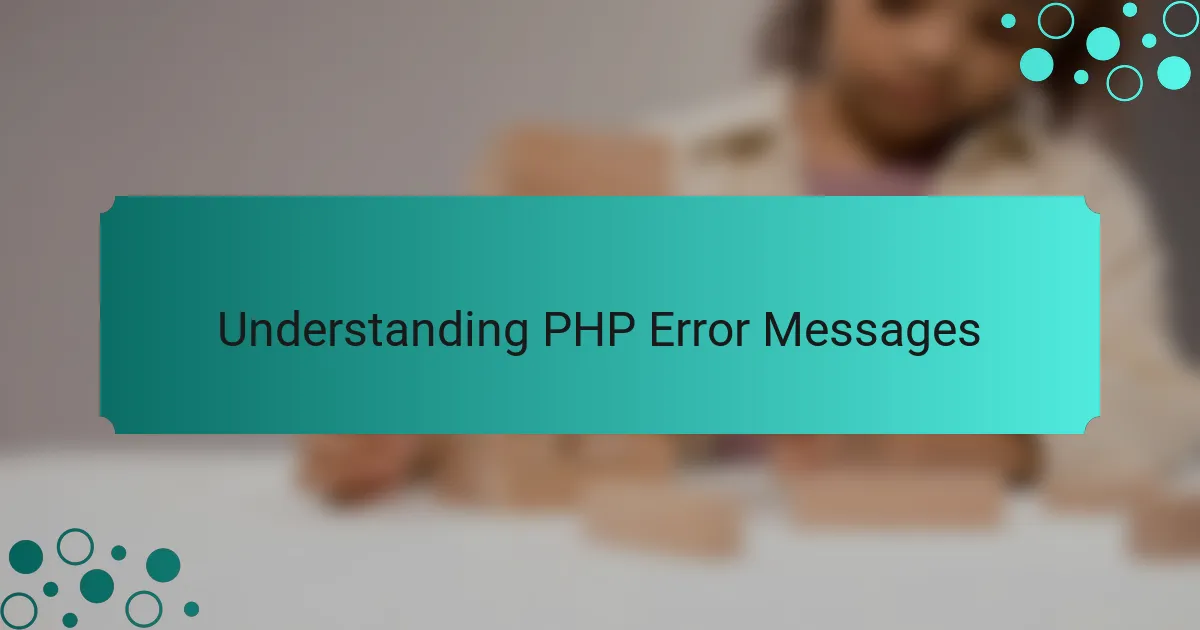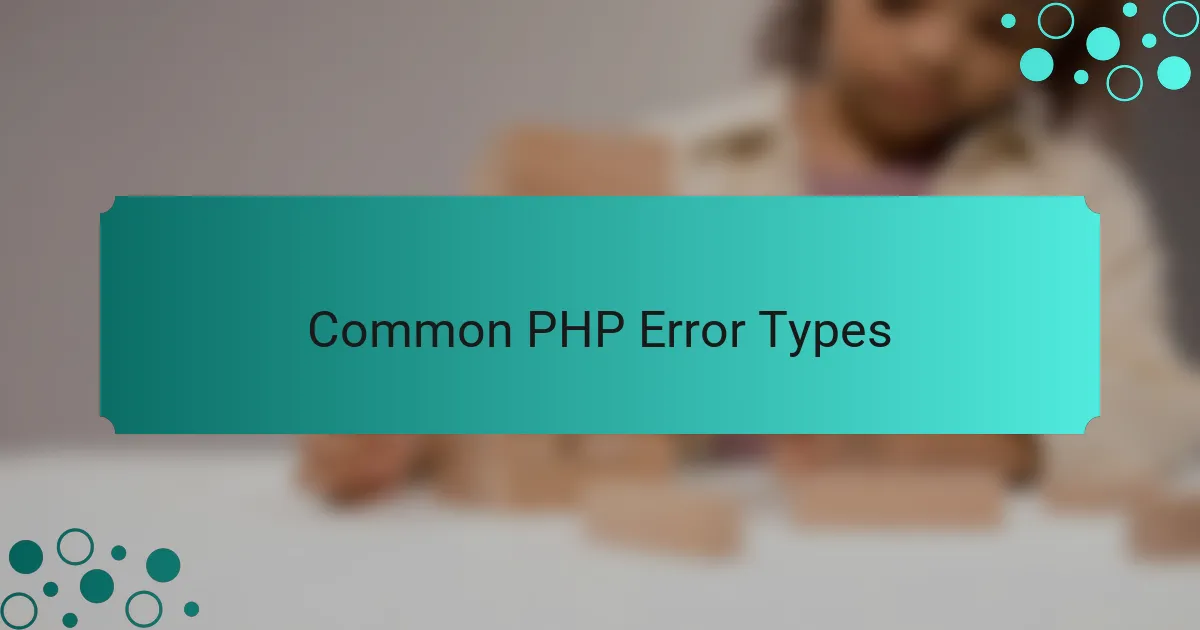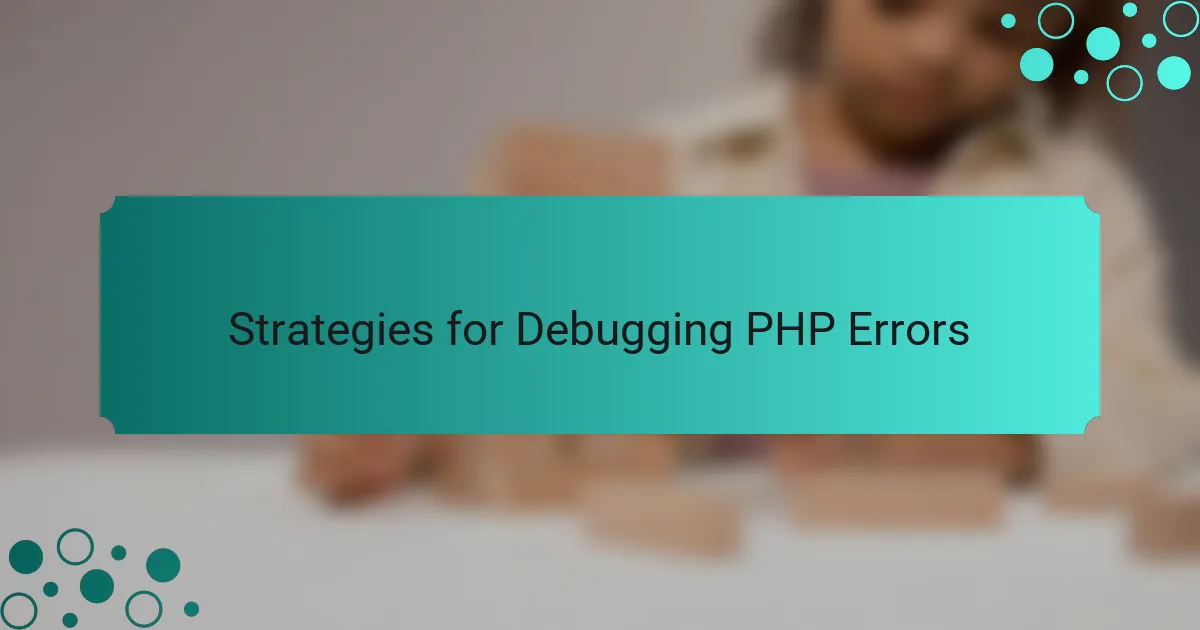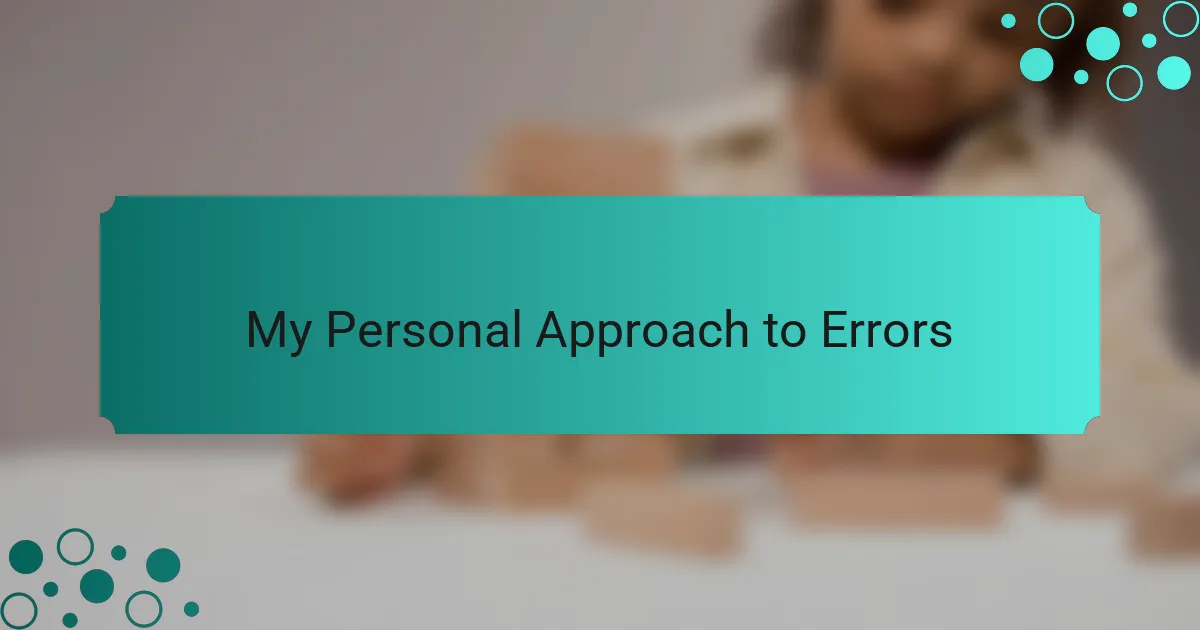Key takeaways
- Understanding different PHP error types (Parse, Fatal, Warning, Notice) is crucial for effective debugging.
- Using tools like Xdebug and proper error reporting settings significantly enhances troubleshooting efficiency.
- Approaching errors with curiosity and treating them as learning opportunities fosters a positive coding experience.
- Attention to detail and systematic troubleshooting through checklists can streamline the debugging process.

Understanding PHP Error Messages
Error messages in PHP can sometimes feel like they are speaking an entirely different language. I remember diving into a project and being completely stumped by a cryptic message that mentioned an “undefined variable.” It was frustrating at first, but with some persistence, I began to understand what these messages were trying to convey. Each one is a clue, guiding you toward the solution, which made the debugging process feel like a personal challenge that I had to conquer.
When I started learning about PHP, I quickly realized that not all error messages are created equal. Some are straightforward, while others may leave you scratching your head. Here’s a quick rundown of common PHP error message types:
- Parse Error: Often caused by syntax mistakes, like missing a semicolon.
- Fatal Error: Indicates critical errors that stop the script from running entirely, like calling a non-existent function.
- Warning: Suggests an issue that won’t halt execution, such as including a file that wasn’t found.
- Notice: A more benign alert, often about minor issues, like using uninitialized variables.
Understanding these messages has been a game changer for my programming. Each time I encounter one, it’s like a little puzzle waiting to be solved!

Common PHP Error Types
When I first started with PHP, I often encountered several common error types that baffled me. Syntax errors, for instance, were a frequent source of frustration. It’s usually a missing semicolon or a misplaced parenthesis that derailed my progress. It’s an easy mistake, but it can take a surprising amount of time to track down!
Another common issue I faced was runtime errors, which occur when the code encounters a problem during execution. I remember spending hours debugging a complex function, only to discover it was trying to access an undefined variable. This experience taught me the importance of thorough testing and error handling. It really gave me a new perspective on how to approach coding in PHP.
Lastly, there are fatal errors, which are quite dramatic. They halt script execution entirely, and I learned to diagnose these quickly to avoid extensive downtime. Understanding these error types has not only improved my coding skills but also made the process far more enjoyable.
| Error Type | Description |
|---|---|
| Syntax Error | Issues with code structure, like missing semicolons or brackets. |
| Runtime Error | Errors that occur during script execution, often due to undefined variables or functions. |
| Fatal Error | Critical issues that stop the script from running completely, requiring immediate fixes. |

Strategies for Debugging PHP Errors
When tackling PHP errors, one of the most effective strategies I’ve found is to use line numbers and error descriptions as precise guides. Each time PHP throws an error, it often includes a line number, and I remember feeling a rush of hope the first time I used this information to zero in on the problem. Isn’t it amazing how just a few extra lines of code can lead to hours of confusion? Finding that exact line often feels like finding a needle in a haystack, but once you do, the relief is almost palpable.
Another technique that really helps me is to log errors instead of displaying them directly on the webpage. Early on, I made the mistake of showing errors to users, which made everything seem chaotic and unprofessional. I found that learning to configure the error reporting settings was essential. Logging errors to a file gives me the chance to review them later without compromising the user experience. How often have I wished I could turn back time and apply this knowledge in my earlier projects?
Finally, understanding the use of built-in debugging tools, like Xdebug, can revolutionize how you approach PHP errors. There was a time when I navigated through errors purely by trial and error, but once I started using Xdebug, things changed completely. Stepping through my code line by line helped me visualize what was happening in real-time. Have you ever had that ‘aha!’ moment when the debugger reveals where things went wrong? It can transform your debugging sessions into a more scientific investigation than a wild goose chase.

Tools for PHP Error Resolution
When it comes to resolving PHP errors, the tools you choose can significantly enhance your experience. One tool I frequently recommend is Xdebug, an invaluable debugger that allows you to step through your code. I recall the first time I utilized Xdebug; it felt like switching on a light in a dark room. Suddenly, I could see exactly where my code was faltering, turning frustration into clarity. Have you ever felt that rush of enlightenment when a tool makes the seemingly impossible, possible?
Another great option is PHP’s built-in functions like error_reporting() and ini_set(). Adjusting these settings offers great flexibility in how errors are handled and displayed. I had a phase where I just turned on all error reporting when testing new code, which helped catch minor issues early on. Sure, it made my screen look a bit cluttered, but seeing everything laid out in front of me was like having an open book during an exam. Have you considered how a minor tweak in your error reporting could lead to significant improvements in your debugging process?
Lastly, leveraging IDEs like Visual Studio Code or PhpStorm has been a game-changer for me. Their live debugging features and integration with tools like Xdebug create a seamless workflow. I remember feeling like a true programmer the first time auto-completion helped me find that tricky function I had just misplaced! The right IDE not only boosts my productivity but also keeps my workflow more organized, giving me the confidence to tackle even the most daunting coding challenges. What tools have you found to be essential in your coding journey?

My Personal Approach to Errors
I can’t stress enough how important it is to approach errors with curiosity rather than frustration. When I see an error message pop up, I remind myself that it’s an opportunity to learn something new. For example, the first time I encountered a “call to undefined function,” I felt utterly lost. But instead of sulking, I dove deeper into my code and discovered a typo. That small mistake turned into a valuable lesson about the importance of careful coding.
Over the years, I’ve developed a habit of treating each error as a puzzle waiting to be solved. I often reflect on how satisfying it is to unravel these mysteries. When I get an “undefined variable” notice, I can’t help but smile because I know I’ll double-check my variables’ scopes and initialization. Isn’t it fascinating how a simple typo or oversight can ripple through your code and lead to confusion? Each resolved error feels like a mini-victory, reinforcing my skills and boosting my confidence.
I also find that sharing my experiences with others amplifies my understanding. When I discuss errors with fellow programmers or in online communities, it opens up new perspectives. I remember a time when a simple suggestion from a colleague helped me avoid a catastrophic bug. Have you ever had that moment when discussing an issue with someone shed light on a solution you couldn’t see? Engaging in these conversations not only helps me learn but also turns error resolution into a community effort rather than a solitary burden.

Lessons Learned from PHP Errors
When dealing with PHP errors, I’ve learned that each mistake is an opportunity for growth. I’ve had moments where a simple typo in a variable name caused hours of frustration. It taught me that attention to detail is critical and that even the smallest oversight can significantly affect my code.
Another valuable lesson is the importance of reading error messages carefully. Initially, I would often glance at them, thinking I could resolve issues quickly. However, I’ve discovered that taking the time to fully understand the error can lead to faster resolutions and deeper insights into PHP’s functioning.
Lastly, keeping a systematic approach when troubleshooting errors is vital. I often create a checklist of common errors that I encounter, which helps streamline the debugging process. This method adds a sense of order to what can feel like chaos when confronted with confusing error messages.
| Key Aspect | My Experience |
|---|---|
| Attention to Detail | A single typo caused hours of debugging. |
| Reading Error Messages | Thoroughly understanding messages leads to quicker resolutions. |
| Systematic Troubleshooting | Creating checklists simplifies the debugging process. |
